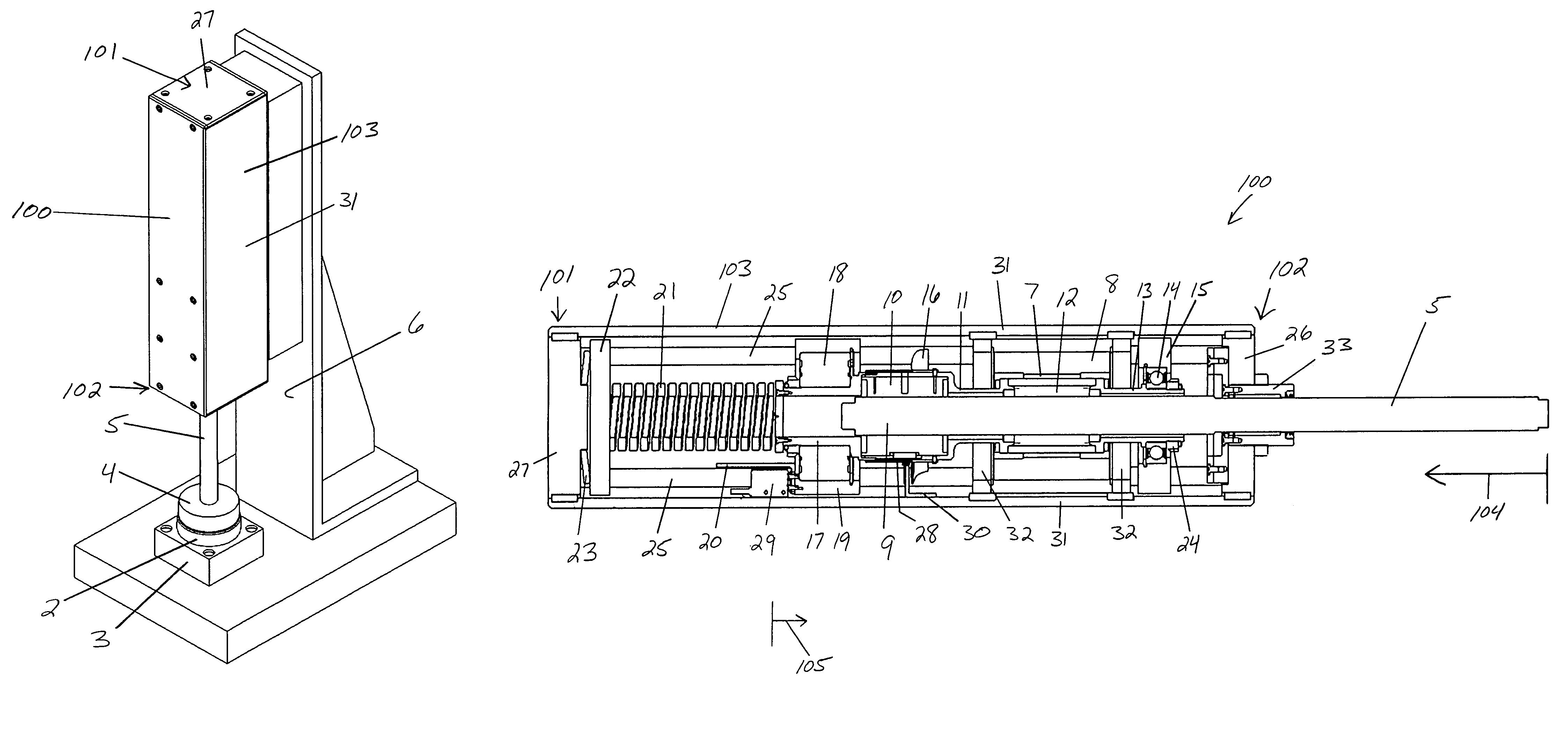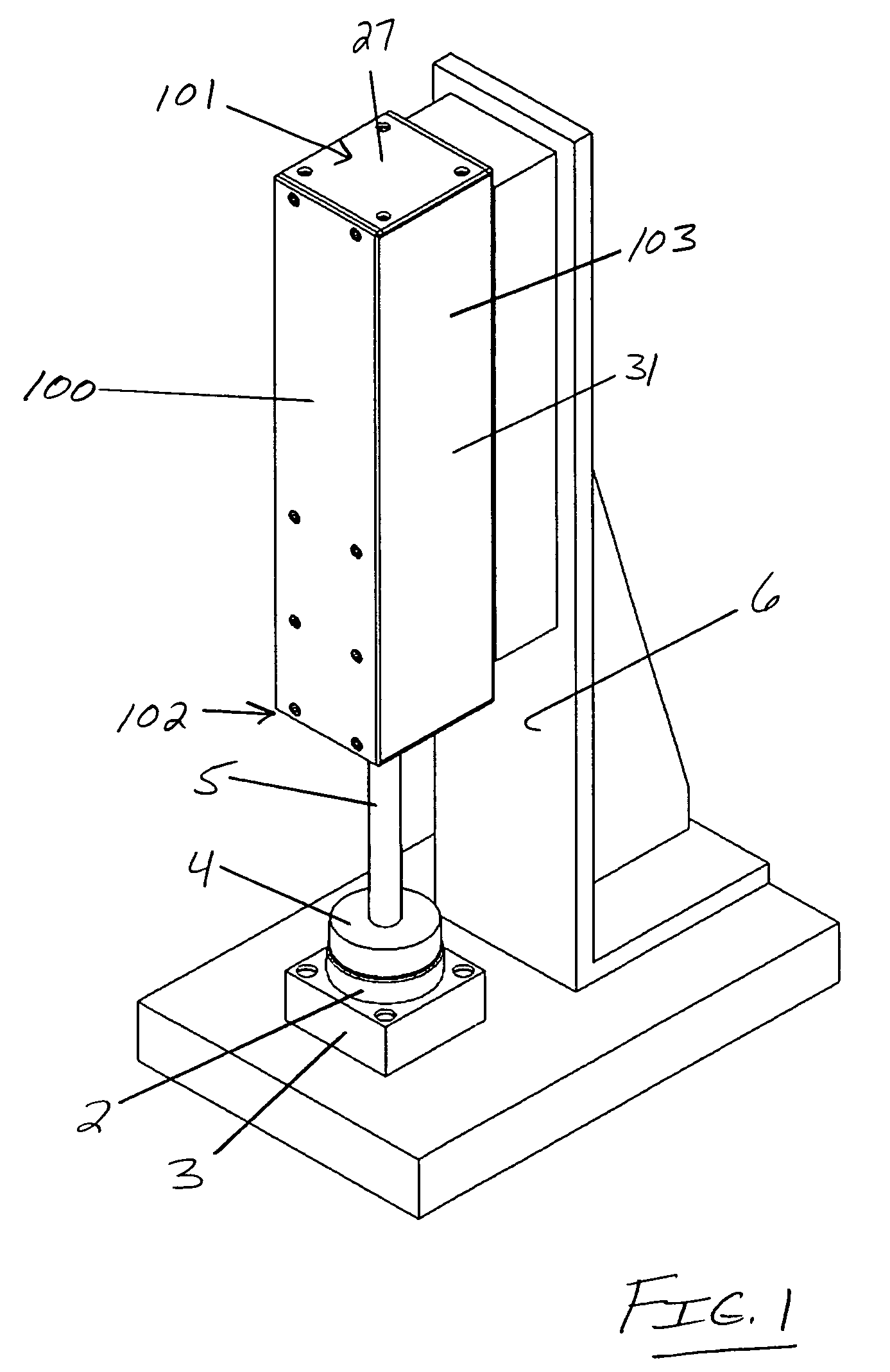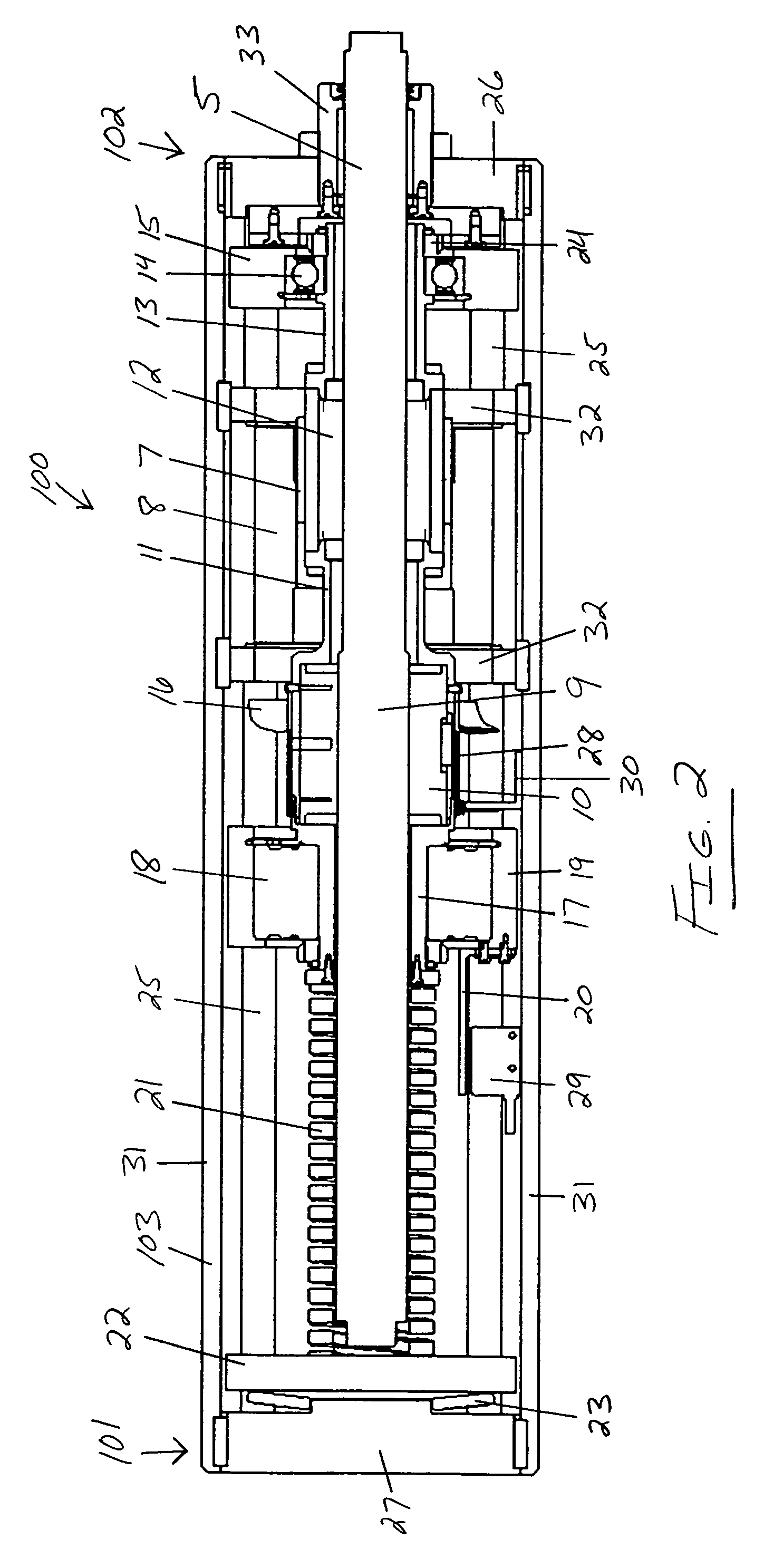Servo actuator with self positioning rotor and method
a self-positioning, actuator technology, applied in the direction of motor/generator/converter stopper, dynamo-electric converter control, gearing, etc., can solve the problems of increasing the cost and size of the motor winding and drive, limiting the speed of permanent magnet motors, and often compromising cycle times
- Summary
- Abstract
- Description
- Claims
- Application Information
AI Technical Summary
Benefits of technology
Problems solved by technology
Method used
Image
Examples
Embodiment Construction
)
[0029]Referring now to the drawings, the preferred embodiment of the present invention generally concerns a servo actuator or linear actuator 100 intended for industrial applications including but not limited to piercing, crimping, pressing, trimming, forming, flaring, clamping, bending, coining, marking, and riveting. FIG. 1 shows a typical bearing press application. The linear actuator 100 of the current invention is shown extended to a point where a bearing 2 is initially being pressed into a receiving block 3. A bearing press tool 4 is directly attached to a screw thrust rod 5 of the linear actuator 100. A press frame 6 supports the linear actuator 100 relative to the pressing operation.
[0030]Referring to FIG. 1, it should be understood that the screw thrust rod 5 of linear actuator 100 would extend very rapidly until the bearing press tool 4 encountered loading generated by the resistance of pressing the bearing 2 into the bearing receiving block 3. The foregoing scenario may ...
PUM
 Login to View More
Login to View More Abstract
Description
Claims
Application Information
 Login to View More
Login to View More - R&D
- Intellectual Property
- Life Sciences
- Materials
- Tech Scout
- Unparalleled Data Quality
- Higher Quality Content
- 60% Fewer Hallucinations
Browse by: Latest US Patents, China's latest patents, Technical Efficacy Thesaurus, Application Domain, Technology Topic, Popular Technical Reports.
© 2025 PatSnap. All rights reserved.Legal|Privacy policy|Modern Slavery Act Transparency Statement|Sitemap|About US| Contact US: help@patsnap.com



